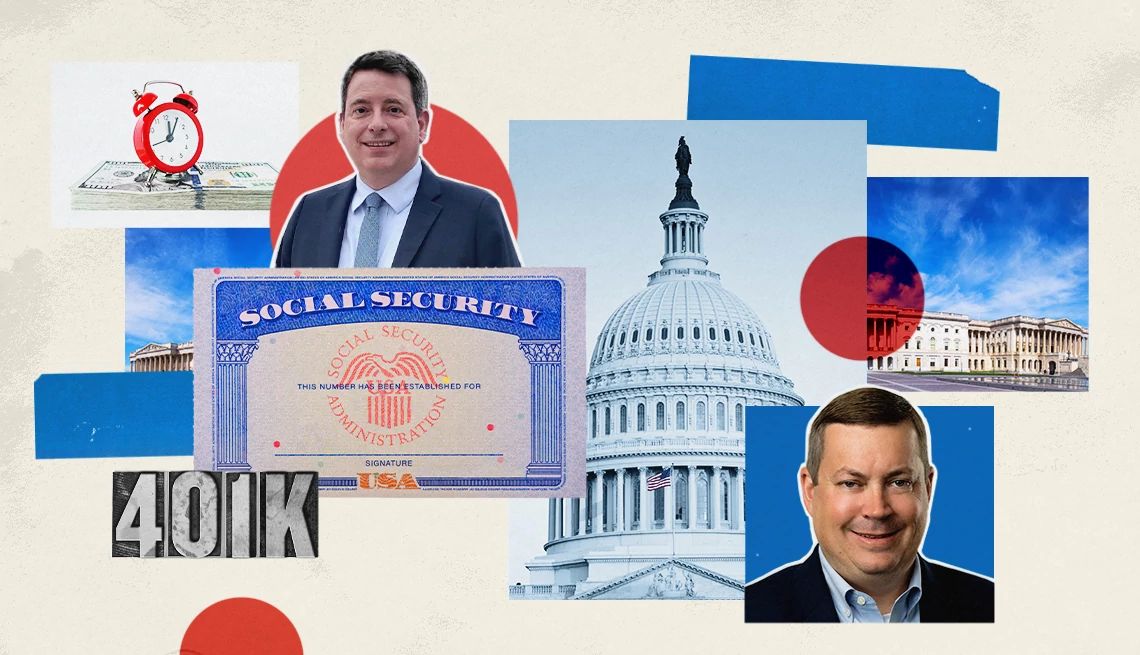The idea that your entire Social Security money could get lost in an afternoon is terrifying. The whole reason Social Security was created in 1935 was because the stock market had crashed and better protections were needed. Just look at history and you can see that privatization shouldn’t even be a conversation. We 100 percent agree that everyone should also have private retirement savings, but that should be entirely separate from Social Security.
Chad Mullen: Also, Social Security is the only form of retirement savings that’s inflation-protected. AARP fought to make the COLA indexed to inflation a long time ago, in 1972, and that is a huge factor in keeping your retirement more secure. And you’d no longer have that type of security if you privatized.
Bill, you said everyone should have private retirement savings and Social Security. Why?
Sweeney: Sometimes lawmakers in Washington get into this debate around whether America should have Social Security or private retirement savings, as if it’s a question of either/or. But, of course, we need both. You’re not going to retire securely with just one or the other. It’s essential that Social Security is there as a backstop, but relying solely on it is not a good way to retire — it’s not enough. Of course, you need private savings as well. But that part of our message sometimes gets lost or misconstrued at these moments when we’re really focusing in on Social Security.
Social Security has always been just one element of a secure retirement. Back in the ’70s and ’80s, AARP talked about the three-legged stool. The three legs of the stool were your pension, your Social Security and your private savings. Well, one of those legs — the pension — basically got sawed off. Only a small percentage of people get pensions these days. And so now, for most, it’s a two-legged stool. One of those legs is Social Security, and the other is private savings.
How is America performing when it comes to private savings?
Mullen: The short answer is not very good. One big issue is that nearly half of all Americans have no access to retirement savings at work, meaning they don’t have any way to save automatically through their jobs. If you don’t have that access, it’s totally incumbent upon you to go out and set up a retirement account. Talk to banks, swing by a financial planner, have all these technical terms thrown at you, then try to decide what to do.
Join Our Fight to Protect Social Security
You’ve worked hard and paid into Social Security with every paycheck. Here’s what you can do to help keep Social Security strong:
I’ve worked in a factory, and when you work 40 hours a week getting sweaty and dirty every day, the last thing you want to do once you get off work is swing by your local financial planning firm and talk about target date index funds. It’s scary, it’s overwhelming, and it’s not necessarily the most welcoming of environments to everyday Americans. So you put it off, you don’t save while at work, then suddenly you’re very near retirement age with very limited time to start saving money. And the statistics tell this story, with 43 percent of Americans ages 50 through 64 having no retirement savings at all.
The other big issue is that even among the folks who’ve had the opportunity to save while at work, most still lack enough funds to get them all the way through retirement securely. The median balance of retirement accounts across the country right now is only $88,000. For those who are in their 50s or 60s, that average balance is between $115,000 and $200,000, depending on how you measure it, but any which way, that’s not going to be enough to support you through 25 or 30 years of retirement. Costs continually go up, and inflation eats away at these account balances while your budget stays fixed. So certainly I think we’re in a situation where we’re not faring too good.
Sweeney: And our new survey on Social Security just demonstrated that. There was a jump in the number of people who say how important Social Security is to their retirement, because most people just don’t have enough private savings. So, for a growing number of people, their retirement stool is basically one-legged, which obviously isn’t secure at all.
How is AARP working to address that insecurity?
Mullen: We’re doing a lot of things. First and foremost, we’re fighting to protect and strengthen Social Security, like we have always and will continue to do. It’s a vitally important part of the retirement mix for most folks, and it’s the only inflation-protected source of retirement income. So we want to make sure that Social Security continues to be there throughout your whole retirement and your kids’ and grandkids’ entire retirements too.
